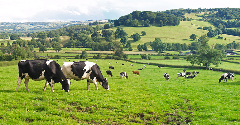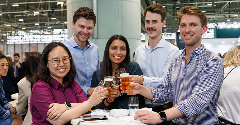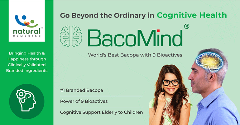News
The Food Industry is Missing a Billion Dollar Trick When it Comes to the Ageing Population
16 Nov 2015
Lauren Bandy, Senior Nutrition Analyst at Euromonitor International
@LaurenKBandy - https://twitter.com/LaurenKBandy
See Lauren Bandy take part in an interactive panel discussion on Day 2 of Fi Europe: http://www.figlobal.com/fieurope/conference/day2
Walk into a supermarket in Western Europe or North America and you’ll find entire shelves dedicated to children’s food and drink products: yoghurts, breakfast cereals, bread, snacks, ready meals, confectionery, soft drinks - the list is seemingly endless. Have a look for products targeted at the aging population and you’ll be hard pressed to find anything, despite there being three times as many people aged 65+ compared to 0-4 years in these two regions. Sales of supplement nutrition drinks, which are mostly positioned towards the elderly, were worth US$1.4 billion in 2014 in Western Europe and North America, but this is dwarfed by the size of the baby food industry, which was worth US$14.2 billion. While essential for all, protein is particularly important for the young, as they grow, and for the elderly, to prevent the loss of muscle mass and strength. With the high protein trend moving to almost every category imaginable – ice cream, cookies, breakfast cereals and crisps – manufacturers could avoid saturating the market by targeting high protein products at the aging population in particular, where the nutritional need is strong and disposable incomes are relatively high.
In 2014, there were 619 million people aged 65+ and by 2030 this is expected to increase by 75% to reach 1.1 billion, representing 13% of the total global population. Countries in the Middle East and Africa are expected to see some of the highest forecast growth rates in older populations and two fifths of those aged 65+ are expected to live in China and India alone by 2030. However, it is developed countries where older populations represent the largest proportion of the total population, and with disposable incomes in Western Europe and North America being higher, it is these regions where manufacturers could take advantage of the 137 million potential consumers with an age-specific product.
Population Aged 65+: Proportion of Total Population (2014) vs Forecast Growth Rates (2014-2030)

The daily protein requirements for a healthy adult weighing 75kg is around 62g a day - when calculating the amount of protein purchased not just from packaged products, but from fresh food too, Passport Nutrition data shows that many countries more than satisfy these requirements already, with purchasing well over the recommended amount. In emerging markets, including China, India and Brazil, fresh food - which includes fresh meat, fish and eggs - is still the predominant source of protein in the diet, although the proportion is expected to decline as penetration and availability of packaged products increases, especially in rural areas of these countries. This is explored further in the global briefing "How the World Buys its Protein: Nutrition Necessity Versus Dietary Fad".
Protein Purchased from Packaged Food vs Fresh Food by Country 2014

While the general population might not necessarily need to consume more protein, as people age, the risk of losing muscle mass and strength increases and a high protein diet is thought to mitigate these effects. While nobody wants to be told they’re old, when marketed in the right way, aging-specific products can be a success; anti-aging skincare products have grown by US$10 billion in the last decade to reach US$25.8 billion in 2014 and is one of the fastest growing categories in the beauty industry. It can be done in food too; Cal-in+, a brand from Yopliat and General Mills, is a yoghurt that contains vitamin D and calcium for strong bones and although doesn’t explicitly target the aging, is marketed to protect against age-associated losses in bone mass. Sales of the brand have increased by 18% in Western Europe over the last two years to reach US$10.5 million in 2015 - with astute marketing and communication there is clear potential for foods to be positioned as “healthy-aging”.
Dairy is the natural home of high protein products and there has been a lot of development in the category related to protein, with mainstream brands like Tru Moo and Nesquik launching high protein variants, or marketing their products as being high in protein. If each of the people aged 65 and over in North America and Western Europe were to spend US$5 a month on a high protein milk drink targeted at healthy aging over the next five years, starting with an extra US$1 in 2015 and US$5 in 2019, the market would more than double in size to reach US$16 billion by 2019.
Market Potential for Flavoured Milk Drinks to Ageing Populations in North America and Western Europe 2014-2019

Given that the current per capita expenditure on flavoured milk drinks in 2014 was US$9 in North America and US$4 in Western Europe annually, it’s very unlikely that the market will follow this ‘US$5 a month’ trajectory over the next five years. However it does highlight that there is great potential and a clear gap in the market for high protein products for healthy aging; while this gap might not be easy to bridge in terms of marketing and communication, manufacturers should consider targeting high protein products at the aging population, where nutritional requirements are greatest.
Lauren Bandy, Senior Nutrition Analyst at Euromonitor International
For more info:
http://blog.euromonitor.com/category/nutrition
http://go.euromonitor.com/Passport-DemoRequest.html
Related news

Has ‘clean’ had its day?
22 Dec 2025
Wielding clean-label positioning and fortification as marketing levers is a dangerous strategy, and brands would be better off explaining the hows and whys of the ingredients in their products, say experts.
Read more
Celebrating the winners of the Fi Europe Innovation Awards 2025
3 Dec 2025
Food industry stakeholders celebrated as the winners of the Fi Europe Innovation Awards were announced at a ceremony in Paris.
Read more
Alternative protein startups pivot to B2B ingredients amid funding shift
27 Nov 2025
Alt protein startups are pivoting from consumer meat analogues to high-value B2B ingredients, driven by stronger investor interest, better margins, and clearer commercial pathways.
Read more
Walmart Marketplace’s record growth prompts search for UK sellers
26 Sep 2025
Walmart’s third-party e-commerce platform, Marketplace, has witnessed extraordinary growth – but a need for more product diversity has prompted the retailer to recruit UK sellers.
Read more
The winners of Vitafoods Europe Startup Challenge 2025 revealed
29 May 2025
Four startups – Yomio Drops, PFx Biotech, Revobiom, and Favamole – took top prizes at this year’s Vitafoods Europe Startup Challenge awards.
Read more
East takes on West in the fight for future food flavours
30 Apr 2025
Asian and South American flavours are now key components on global menus, driven by a growing global appetite for culinary mashups.
Read more
Food companies urged to bring ‘joy’ and urgency to healthy food mission
14 Mar 2025
For too long, businesses have treated health and sustainability as separate agendas – but there is growing evidence to show diets that benefit human health can also enhance that of the planet, say experts.
Read more
Entries open for inaugural Vitafoods Europe Innovation Awards
29 Jan 2025
Entries are open for the inaugural Vitafoods Europe Innovation Awards, celebrating the ingredients, finished products, partnerships, and initiatives redefining the nutraceutical landscape.
Read more
Paris Olympics: Food and beverage brands champion health, fun, and sustainability
5 Aug 2024
Food and beverage brands are aligning with the Paris Olympics 2024 Food Vision, which emphasises sustainability, local sourcing, and plant-based diets.
Read more
Natural Remedies: Bringing health and happiness via validated branded ingredients
18 Apr 2024
Natural Remedies is an internationally renowned botanical healthcare company committed to advancing the field through rigorous research and the development of clinically validated Branded Ingredients. Guided by our foundational principle of ‘BEING USEF...
Read more